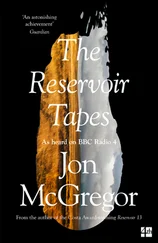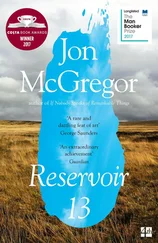xvii. See also the testimony of Appellant F, section 27.3 of transcript 72: ‘ Yeah but actually they wouldn’t let us go and help. It was too dangerous and that. They told us we had to keep going. ’
xviii. Much of this traffic was conducted not by political sympathisers but simply by economic opportunists, mainly drawn from a local population of fishing crews and ferrymen whose economic activity had been curtailed by the security situation. The boats were often not suited to cross-Channel passage, being typically overloaded and not stocked with life-jackets, food rations or other emergency supplies; passengers were expected to bring any supplies they deemed necessary for the voyage. It is not known how many boats failed to complete the voyages, which were usually conducted by night, but the testimony here does imply that the proportion of failures was known or believed to be high.
xix. Disputed by Prisoner J.
xx. This section redacted at the request of the relevant security services.
xxi. The following notes are drawn from an International Red Cross report referring to the period in question, and also from an account published in the Observer newspaper, with acknowledgments. The refugee centre on the outskirts of Sangatte, northern France, was based around a large warehouse building originally used by the builders of the now-defunct Channel Tunnel. Upwards of 1,600 people were housed there, in an International Red Cross operation which attracted much controversy. (It is perhaps worth noting in passing that the centre was itself a successor to an earlier incarnation, many years prior to the period in question, which served to house the mainly African refugees and economic migrants attempting to gain entry to the UK.) The refugees slept in tents erected inside the warehouse, with newcomers or those for whom there simply wasn’t room sleeping on the concrete floor in the spaces between the tents. Toilet and washing facilities were rudimentary, and often in a poor state of repair. Food rations, usually consisting of bread, soup and hot drinks, were served each day. The refugees were free to come and go, and often made the long walk along a busy road into the town, looking for work, or to make phone calls, or simply for something to do. The refugees tended to organise themselves into groups by nationality, and as their residence became longer-term tensions naturally arose between the different groups. Periodically, the centre was closed down or heavily restricted by the authorities, resulting in large numbers of refugees retreating to the woodland which lay along the high ground overlooking the coast.
xxii. Disputed by Prisoner J, in trial evidence which was ruled proven following sealed submission made by Control Order Subject 00345/B. [Archival Reference HC/7825/P34.03.87; viewing by application only.]
xxiii. This section of the testimony, referring to the forced clearance of all northern refugee sites by French militias believed to have been funded by rogue elements within the French government, is well supported by numerous documentary sources both contemporaneous and retrospective. [See, primarily, vols 2–5 of The Displacement Testimonies , De Waarheids Uitgeverij, The Hague: a well-annotated collection of eyewitness accounts and official memoranda, in Dutch and English.]
xxiv. See also testimony of Appellant F, section 32.4 of transcript 72: ‘Yeah, they came with guns, with tanks, they killed loads of people, […] some people.’
xxv. See also testimony of Appellant F, section 32.6 of transcript 72: ‘And loads of people were like abducted, captured yeah? I don’t know what happened to them, I don’t know what happened to them even now like.’
xxvi. See also testimony of Appellant F, section 32.9 of transcript 72: ‘The ones who could swim, they swam like. They weren’t even […] there was an attack […] everyone got in and loads of people, they like I guess they drowned or something, they couldn’t swim yeah? It weren’t even that far to the boats, it was just like a few hundred metres or something. But I knew how to swim from when I was a kid […]’
xxvii. This section redacted at the request of the relevant security services.
xxviii. This section redacted at the request of the relevant security services.
xxix. The appellants’ chronology is inconsistent with the historical record here, although it should be noted that such confusion on the part of returning refugees is not unusual. It appears likely that the appellants spent a period of eight or nine years (following the five years in the area of Sangatte) in a series of displaced persons camps in the Netherlands. Their return to the former UK appears to have been prompted by the Dutch government’s declaration that the draft peace agreement was in force and that displaced persons would no longer be supported within the territory of the Netherlands. It is likely that the appellants’ return was via one of the cargo ships which was utilised for mass repatriation at this time, disembarking at Tilbury (which was held, under the terms of the draft peace agreement, by opposition groups).
xxx. The following extract from a widely circulated public information sheet on internal travel, archived during the later stages of the period in question, may serve to illuminate this section of the appellants’ testimony: ‘ When declaring a lift-share request, choose a spot where approaching vehicles have both sufficient time to see you and sufficient space to stop safely. Consider routes leading away from the roadside in the event of possible threat. Make eye contact with passing drivers, but maintain a neutral expression. Be patient. Once a lift has been offered, briefly discuss your destination and that of the driver’s while assessing the condition of the vehicle and state of the driver and other occupants. Whilst in the vehicle, make light conversation as prompted by the driver, taking care to avoid politics, religion or the recent security situation. Familiarise yourself with the door and window mechanisms adjacent to your seat; if the central locking has been activated you may still be able to effect an exit using the window. ’
xxxi. This section redacted at the request of the relevant security services.
xxxii. This seems likely. Assuming the appellants’ lift-share arrangement left them deposited at the Newark/Winthorpe junction, Bassingham would have been approximately ten miles distant, well within the scope of a day’s walk if taking a route via Stapleford Wood and Norton Disney. However, given the changes in the local landscape (felled trees, demolished or partly destroyed buildings, new and significantly enlarged watercourses, earthworks, embankments, etc) which would have taken place during the fourteen years of the appellants’ absence, the complex access-rights situation, and the expansion of military bases in the area, the appellants’ claim that this journey took three days is presumed valid for the purposes of this appeal.
xxxiii. Reference to the military training area which spreads north from the A17 along both banks of the River Witham.
xxxiv. Aerial surveillance records have confirmed that on this date there was in fact a house on the northern outskirts of Bassingham to which banners and ribbons had been fastened and in which an irregular number of persons had gathered. Haddington, of course, was not habitable at this time.
xxxv. Note that in common with many appellants and their dependants, a confusion has arisen here between military personnel and host officers from the security services. Records confirm that interception in this case was carried out by the latter.
xxxvi. This section redacted at the request of the relevant security services.
xxxvii. The appellants appear unaware at this point that further appeal against the secure relocation process has been refused.
Читать дальше
Конец ознакомительного отрывка
Купить книгу




![Нил Уолш - Единственное, Что Имеет Значение [The Only Thing That Matters]](/books/393630/nil-uolsh-edinstvennoe-chto-imeet-znachenie-the-onl-thumb.webp)







